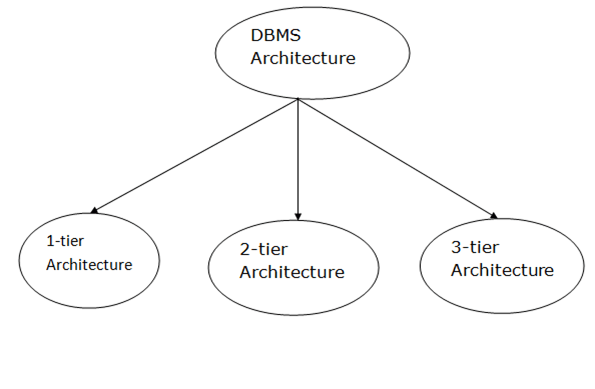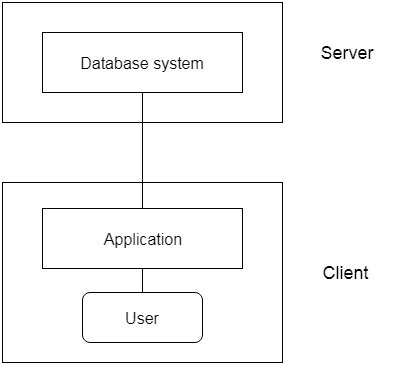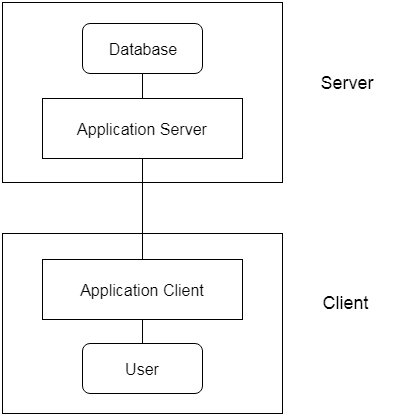DBMS Architecture
- The DBMS design depends upon its architecture. The basic client/server architecture is used to deal with a large number of PCs, web servers, database servers and other components that are connected with networks.
- The client/server architecture consists of many PCs and a workstation which are connected via the network.
- DBMS architecture depends upon how users are connected to the database to get their request done.
Types of DBMS Architecture

Database architecture can be seen as a single tier or multi-tier. But logically, database architecture is of two types like: 2-tier architecture and 3-tier architecture.
1-Tier Architecture
- In this architecture, the database is directly available to the user. It means the user can directly sit on the DBMS and uses it.
- Any changes done here will directly be done on the database itself. It doesn't provide a handy tool for end users.
- The 1-Tier architecture is used for development of the local application, where programmers can directly communicate with the database for the quick response.
2-Tier Architecture
- The 2-Tier architecture is same as basic client-server. In the two-tier architecture, applications on the client end can directly communicate with the database at the server side. For this interaction, API's like: ODBC, JDBC are used.
- The user interfaces and application programs are run on the client-side.
- The server side is responsible to provide the functionalities like: query processing and transaction management.
- To communicate with the DBMS, client-side application establishes a connection with the server side.

Fig: 2-tier Architecture
3-Tier Architecture
- The 3-Tier architecture contains another layer between the client and server. In this architecture, client can't directly communicate with the server.
- The application on the client-end interacts with an application server which further communicates with the database system.
- End user has no idea about the existence of the database beyond the application server. The database also has no idea about any other user beyond the application.
- The 3-Tier architecture is used in case of large web application.

Fig: 3-tier Architecture




No comments:
Post a Comment